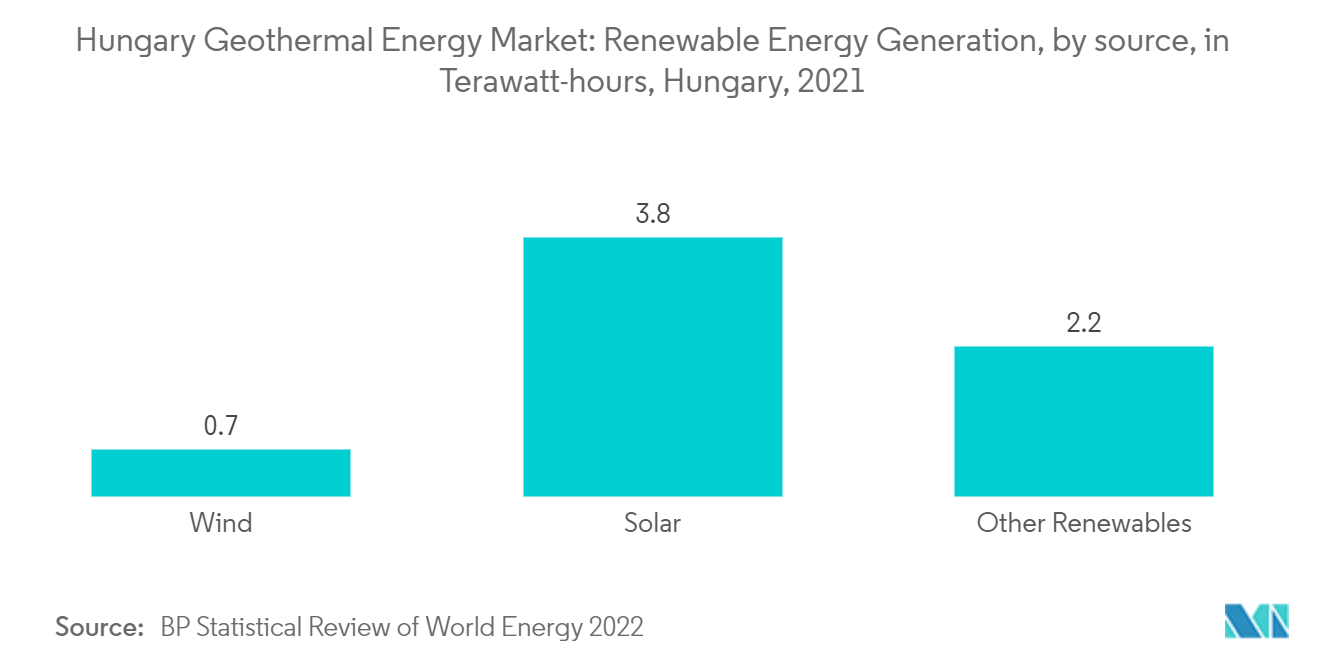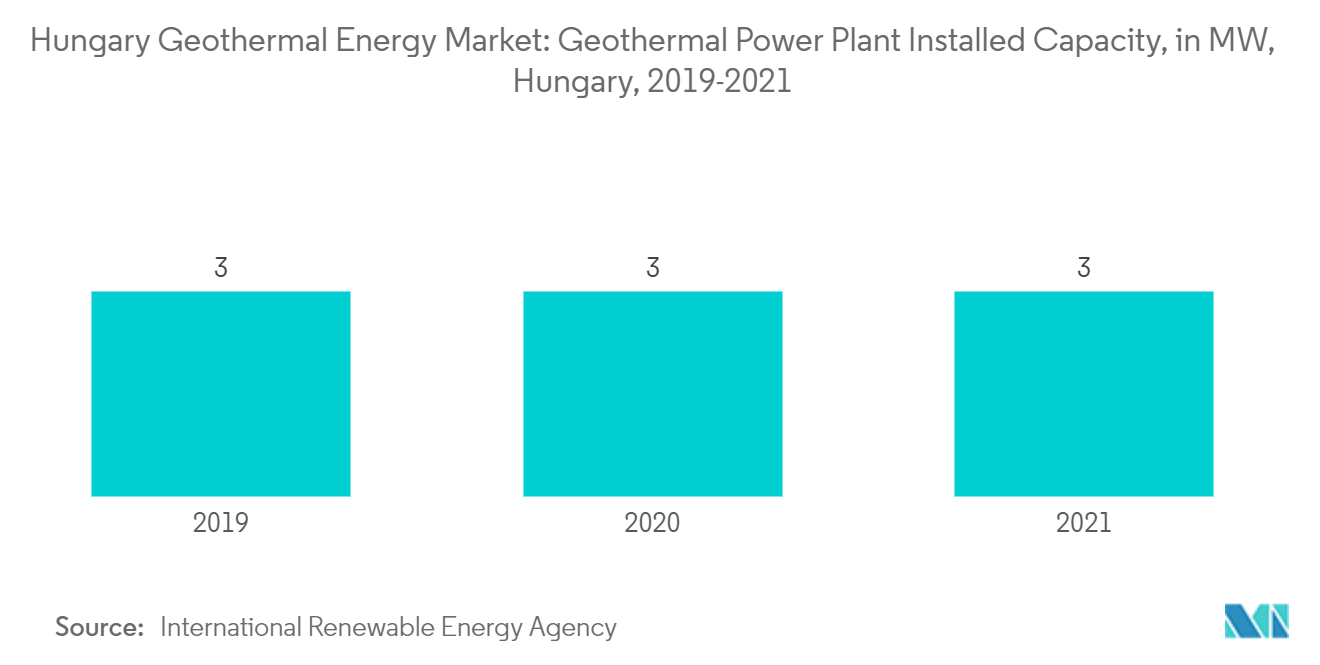Market Trends of Hungary Geothermal Energy Industry
This section covers the major market trends shaping the Hungary Geothermal Energy Market according to our research experts:
Increasing Demand for Alternative Clean Energy Sources Expected to Hinder the Market
- Hungary has increased its climate ambitions by legislating a carbon neutrality goal for 2050 and adopting a long-term vision with the National Clean Development Strategy, which guides energy policy decision-making. Hungary has a strong starting point with multiple low-carbon generations, and the government has an ambitious target of 90% clean electricity by 2030.
- In 2021, Hungary sourced most of its electricity from solar energy. In 2021, 3.8 terawatt hours were derived from this source, while other renewables and wind energy sources ranked second and third, respectively.
- According to preliminary statistics by the Hungarian Energy and Public Utility Regulatory Authority (MEKH), Hungary's renewables accounted for 19.2% of Hungary's electricity generation in 2021.
- In 2021, solar was the leading renewable power generating source with 3,793-gigawatt hours (GWh), a Y-o-Y increase of 54.3%. It reached a 10.6% share in Hungary's power generation and 55.2% in its combined renewable power output. Biomass and wind contributed 25.9% and 9.5% of renewable generation, respectively.
- In May 2022, Hungary's state-owned MVM Group's renewables announced plans to build 28 new solar power plants with 0.5 MW capacity each. The EUR 17.3 million investment is partly supported by EU funds. The new plants are expected to start commercial operation next year. The project complies with MVM's mid-term strategy, which aims to accelerate the uptake of renewable energy sources in Hungary in line with the 2050 climate goals and the country's green transition.
- Thus, the existing, upcoming, and planned alternative clean energy projects such as solar, wind, and others are expected to hinder the market's growth during the forecast period.

Geothermal Power Generation to Dominate the Market
- Geological exploration, wells drilled for thermal water management (more than 85% of the nation's drinking water is supplied by deep wells), and wells drilled for hydrocarbon resources have all been used to identify Hungary's geothermal potential.
- Iran's geothermal power plant installed capacity has remained the same for the past few years. In 2021, the geothermal power plant installed capacity was 3 MW.
- Under the concessional system (obligatory for exploring and exploiting geothermal energy at a depth below 2,500 m, the typical depth range for power production and CHP projects), a preliminary complex vulnerability and impact assessment (CVIA) has been prepared for over 20 potential geothermal areas.
- In September 2022, Gergely Gulyas, the chief of staff to Prime Minister Viktor Orban, announced that Hungary plans to reduce gas use by 25% in the current heating season at public institutions and businesses, except for hospitals and social institutions, due to rising energy costs.
- The country's government is highly focused on the power generation facility through its geothermal energy, and it is expected to reduce its dependency on natural gas for heat and electricity generation.
- The country is estimated to increase its power generation capacity to around 12 MWe by 2025, with electricity production of about 36,000 GWhe/year.
- The rising capacity is estimated to increase the geothermal share in the country's total electricity production.


